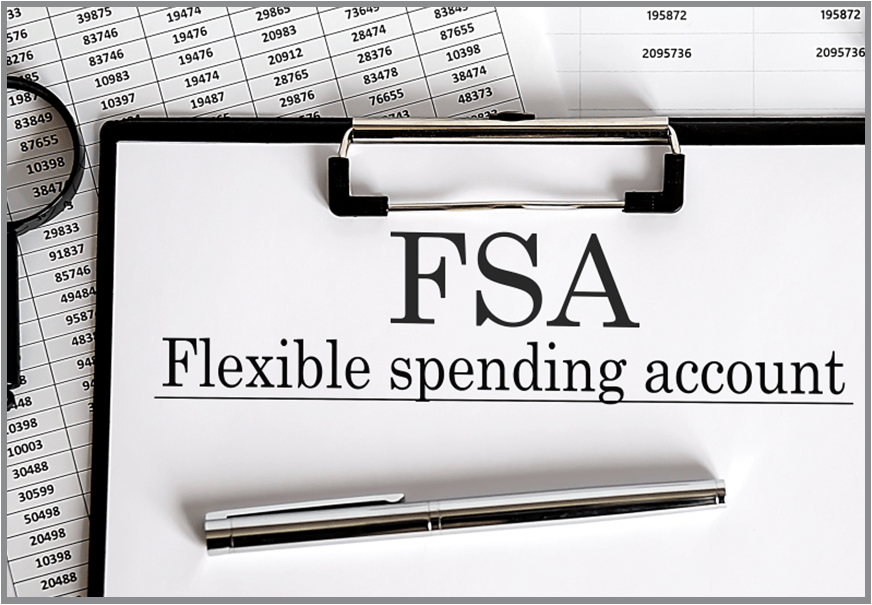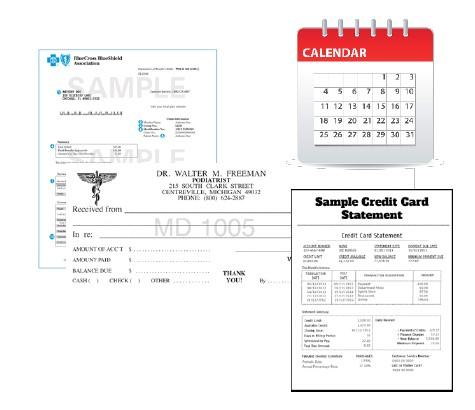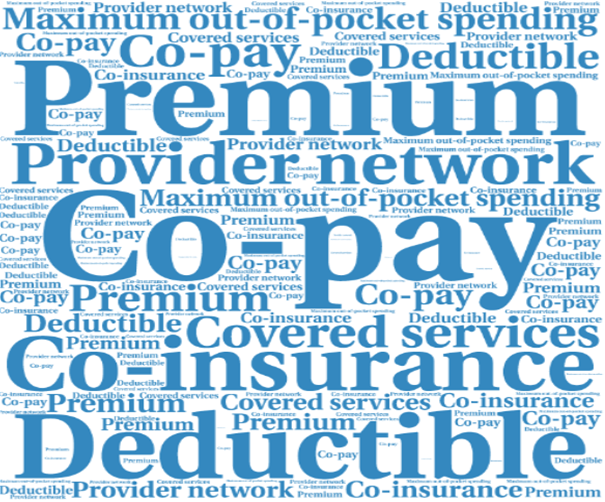
FS-1083 | 2019, updated August 2024
Paying for Healthcare or Daycare? Flexible Spending Accounts Can Help!

Healthcare and daycare for dependents, children or adults, are expensive. In the United States, health care spending growth has outpaced inflation, the population, and income, to name a few, and does not appear to be slowing down (US Health and Human Services, 2015). One out of every three families spends 20% of their income on childcare (care.com, 2018).
Do you spend about that amount?
Whatever you spend, there’s a way to save some money. You can take advantage of a Flexible Spending Account (FSA).
A flexible spending account is a great, tax-advantaged tool that can help you save for health and dependent care expenses. Tax-advantaged means you can automatically transfer money from your paycheck into the FSA, prior to taxes being taken out. It is a win-win. You save money on taxes and have money set aside for eligible healthcare and dependent care expenses.
Keep reading and learn:
- Uses and benefits (and drawbacks) of an FSA;
- How to calculate the amount of money you may want to put into an FSA;
- How to set up and use your FSA following the steps in this fact sheet.
Pre-Tax Dollars: FSAs put your pre-tax dollars to work. Why is this important? Pre-tax dollars means that the money is set aside before taxes (Federal, FICA, and State) are taken out of your paycheck. Setting money aside in this way, before taxes, has two benefits:
- Setting this money aside before taxes lowers your end-of-year tax bill. When the money is set aside, prior to taxes, it is as if that money never existed.
- Because the money is going into the FSA account before taxes are taken from it, you get a little extra – because the taxes were not deducted.
Medical or Healthcare Flexible Spending Accounts: You can set aside between $120 and $3,200 (in 2024) a year to reimburse yourself for eligible out-of-pocket health care expenses. Eligible out-of-pocket expenses may include deductibles, copayments or coinsurance not reimbursed by any medical, dental, vision or prescription insurance plans for you and your family. A complete list of eligible out-of-pocket expenses can be found at https://www.irs.gov/publications/p502.
Dependent Daycare Flexible Spending Accounts: You can set aside between $120 and $5,000 (if spouses are filing together) each year to reimburse yourself for eligible dependent care expenses. Dependent(s) are commonly children under age 13, but elder care, if the elder is living with you, may also be included. Childcare can cover actual daycare as well as some before-and-after school care, summer camps, and pre-school tuition. Elder carecan include a housekeeper and in-home care services. A complete list of eligible dependent care expenses can be found at https://www.irs.gov/publications/p503.

The drawback to an FSA account is that with an FSA you either use your money by the end of the year or lose it. Calculating how much you want to put into the FSA account is very important. The following worksheets will help you organize your expenses and make your decision.
Use these worksheets to estimate the amount to put in your FSA so you have enough but don’t go over because you will not be able to get the money back.
Before you begin, gather last year’s records of medical visits, receipts, credit card statements, and explanation of benefit forms. With this information you can fill in the blanks on the Estimating Medical Expenses worksheet. You should also include any anticipated changes from last year, such as needing a surgery or a change in your medical situation that will require more or fewer doctor visits.
| Annual One-Time Medical Expenses | Costs | Visits | Total |
|---|---|---|---|
| Annual Deductible | |||
| Medical Supplies and Equipment | |||
| Hospitalization Expenses | |||
| Vision Services (glasses, contacts, etc.) | |||
| Dental Services (braces, oral surgery, etc.) | |||
| Total Annual One Time medical expenses | |||
| Annual Copayment Medical Expenses | Costs | Visits | Total |
|---|---|---|---|
| Primary Care | |||
| Specialist | |||
| Chiropractor | |||
| Vision Exams | |||
| Dental preventive visits | |||
| Drug and Prescription Expenses | |||
| Emergency Room/Urgent Care | |||
| Total Annual Copayment Medical Expenses | |||
| Total Annual One-Time and Copayment Medical Expenses | ________________ |
Now that you have totaled your one-time and copayment medical expenses for the year, you need to decide if you will likely be spending the same amount for the same services this next year.
Finally, you need to decide on the amount of money you want taken from your pay check for a Healthcare FSA. This will vary depending upon how often you receive your paycheck. You can determine this amount using the worksheet below.
| Total Annual One-time Medical Expenses and Copayments | |
|---|---|
| Total Expenses ÷ 12 = (Monthly deduction) |
|
| Total Expenses÷ 24 = (Biweekly deductions) |
|
| Total Expenses ÷ 20 = (22- pay Faculty deductions) |
Calculating dependent care expenses can vary depending upon the frequency of the care provided. For example, a day camp may have a one-time fee and the before/after school care will only occur during the school year. Coming up with a good estimate can be done by reviewing the amount of money you spent on eligible dependent daycare expenses last year. Use the next worksheet (Dependent Daycare Activity) to determine your total dependent daycare costs.
| Dependent Daycare Activity | Annual Cost |
|---|---|
| Day Camp | |
| Nursery School | |
| Private Daycare | |
| Before/After School Care | |
| Care for incapacitated adult | |
| Housekeeper caring for an eligible dependent | |
| Total Dependent Care Costs |
Estimating Deductions for Dependent Daycare FSA
Use the following worksheet below to determine the amount of money you want taken from your paycheck for a Dependent Daycare FSA. This will vary depending upon how often you receive your paycheck.
| Total Annual Dependent Daycare Expenses | |
|---|---|
| Total Expenses ÷ 12 = (Monthly deduction) |
|
| Total Expenses÷ 24 = (Biweekly deduction) |
|
| Total Expenses ÷ 20 = (22- pay Faculty deduction) |
You will need this information when you establish your flexible spending account during the open enrollment period or when you are newly hired.
Remember that you must enroll separately for a Healthcare Flexible Spending Account and a Dependent Daycare Flexible Spending Account.
Now that you have totaled your expenses, you need to sign up. There are two ways to sign up;
- Upon being hired and
- During open enrollment.
When you are hired, you may not need an FSA. However, during employment, we all go through life changes – so keep in mind that you can always change your enrollment status into an FSA during the annual open enrollment period.
After you are enrolled in the Healthcare FSA you may have the option to receive a debit card to pay for eligible healthcare expenses. If you cannot use a debit card you may submit receipts for reimbursement. Debit cards are more convenient as you have no out-of-pocket costs. Be sure to keep your receipts as you may be asked to provide documentation. Reimbursements can usually be done online or by paper. Receipts are necessary to submit a reimbursement claim.
After you are enrolled in the Dependent Daycare FSA you must submit requests for reimbursement either online or using a paper claim form.
Depending on your employer’s policies, there may be a built-in grace period for the Healthcare FSA. According to the IRS, employers can have a grace period up to 2 ½ months or employers may also carry over up to $500 of unused funds into the following plan year. You must use all of your FSA funds by the end of the plan year or you lose any remaining money in the account.
Taking advantage of an FSA account may be another great way for you to prepare for healthcare and dependent daycare expenses as well as save on taxes. Use this fact sheet to organize your expenses and then call your Human Resources department to learn about the next open enrollment period or to set up a meeting to fill out your new-hire paperwork. You can take charge of your situation today!

Health Insurance Important Words to Know
Coinsurance - Your part of the costs of a covered service. This is part of the allowed amount for the service. You pay this amount once you have met your deductible.
Copayment - A set amount (for example, $20) you pay for a covered service. You pay this amount when you get the service. The amount you pay may change based on the type of service.
Deductible - The amount you owe for the health care services your health insurance plan covers before your health insurance plan begins to pay. For example, if your deductible is $1,000, your plan won’t pay anything until you’ve met your $1,000 deductible for covered health care services. The deductible may not apply to all services; especially preventive services.
Explanation of Benefits (EOB) - A letter from an insurance company showing what treatments and/or services were paid for. It includes the services, performed, the provider’s name, the patient’s name, the fee, how much the insurer allows, and how much the patient must pay.
Flexible Spending Account (FSA) - A benefit option that allows employees to contribute tax-free money from their pay to an account that can be used for reimbursement for eligible healthcare and/or dependent care expenses. These arrangements are regulated by federal law.
Grace Period - You generally must use the money in an FSA within the plan year. But your employer may offer one of 2 options: It can provide a “grace period” of up to 2 ½ extra months to use the money in your FSA or it can allow you to carry over up to $500 per year to use in the following year. Your employer can offer either one of these options but not both. It’s not required to offer either one. At the end of the year or grace period, you will lose money left over in your FSA. So, it’s important to plan carefully and not put more money in your FSA than you think you’ll spend within a year on things like copayments, coinsurance, drugs, and other allowed health care costs.
Out-of-Pocket Costs - Your costs for services that are not paid by insurance. This includes deductibles, coinsurance and copayments. It also includes costs for services that are not covered by your health insurance plan.
- Smart Choice - Smart Use Health Insurance Insuring your Health
http://extension.umd.edu/insure/- Helping You Make a Good Guess for out-of-pocket expenses
- Marketplace Health Insurance Fact Sheet
- My Smart Choice and Smart Use Spending Plan
- My Smart Choice Workbook
- Saving for Health and Medical Expenses
- Understanding and Estimating Health Care Expenses
https://extension.umd.edu/programs/family-consumer-sciences/healthinsurance-literacy/counsumer-resources/
- Internal Revenue Service (IRS)
- Publication 502, Medical and Dental Expenses
https://www.irs.gov/publications/p502 - Publication 503, Child and Dependent Care Expenses
https://www.irs.gov/publications/p503 - Publication 969, Health Savings Accounts and Other Tax-Favored Health Plans
https://www.irs.gov/publications/p969
- Publication 502, Medical and Dental Expenses
This publication was provided by the Health Insurance Literacy Initiative
with funding from the University of Maryland Extension, the College of
Agriculture and Natural Resources, and the University of Delaware
Cooperative Extension.
- US Health and Human Services, 2015. Retrieved from https://aspe.hhs.gov/system/files/pdf/75441/report.pdf
- Care.com. 2018 Retrieved from https://investors.care.com/investors/Press-Releases/Press-Release-Details/2017/Nearly-1-in-3-Families-Spend-At-Least-20-of-Household-Income-on-Child-Care/default.aspx.
JESSE KETTERMAN
jketterm@umd.edu
MEGHAAN LURTZ
REVISED BY
Jesse Ketterman
EDITORS
Bonnie Braun & Lynn Little
This publication, Paying for Healthcare or Daycare? Flexible Spending Accounts Can Help! (FS-1083), is a part of a collection produced by the University of Maryland Extension within the College of Agriculture and Natural Resources.
The information presented has met UME peer-review standards, including internal and external technical review. For help accessing this or any UME publication contact: itaccessibility@umd.edu
For more information on this and other topics, visit the University of Maryland Extension website at extension.umd.edu
University programs, activities, and facilities are available to all without regard to race, color, sex, gender identity or expression, sexual orientation, marital status, age, national origin, political affiliation, physical or mental disability, religion, protected veteran status, genetic information, personal appearance, or any other legally protected class.
When citing this publication, please use the suggested format below:
Ketterman, J., & Lurtz, M., (2019, updated August 2024). Paying for Healthcare or
Daycare? Flexible Spending Accounts Can Help! (FS-1083). University of Maryland
Extension. go.umd.edu/FS-1083.
 English
English العربية
العربية Български
Български 简体中文
简体中文 繁體中文
繁體中文 Hrvatski
Hrvatski Čeština
Čeština Dansk
Dansk Nederlands
Nederlands Suomi
Suomi Français
Français Deutsch
Deutsch Ελληνικά
Ελληνικά हिन्दी
हिन्दी Italiano
Italiano 日本語
日本語 한국어
한국어 Norsk bokmål
Norsk bokmål Polski
Polski Português
Português Română
Română Русский
Русский Español
Español Svenska
Svenska Català
Català Filipino
Filipino עִבְרִית
עִבְרִית Bahasa Indonesia
Bahasa Indonesia Latviešu valoda
Latviešu valoda Lietuvių kalba
Lietuvių kalba Српски језик
Српски језик Slovenčina
Slovenčina Slovenščina
Slovenščina Українська
Українська Tiếng Việt
Tiếng Việt Shqip
Shqip Eesti
Eesti Galego
Galego Magyar
Magyar Maltese
Maltese ไทย
ไทย Türkçe
Türkçe فارسی
فارسی Afrikaans
Afrikaans Bahasa Melayu
Bahasa Melayu Kiswahili
Kiswahili Gaeilge
Gaeilge Cymraeg
Cymraeg Беларуская мова
Беларуская мова Íslenska
Íslenska Македонски јазик
Македонски јазик יידיש
יידיש Հայերեն
Հայերեն Azərbaycan dili
Azərbaycan dili Euskara
Euskara ქართული
ქართული Kreyol ayisyen
Kreyol ayisyen اردو
اردو বাংলা
বাংলা Bosanski
Bosanski Cebuano
Cebuano Esperanto
Esperanto ગુજરાતી
ગુજરાતી Harshen Hausa
Harshen Hausa Hmong
Hmong Igbo
Igbo Basa Jawa
Basa Jawa ಕನ್ನಡ
ಕನ್ನಡ ភាសាខ្មែរ
ភាសាខ្មែរ ພາສາລາວ
ພາສາລາວ Latin
Latin Te Reo Māori
Te Reo Māori मराठी
मराठी Монгол
Монгол नेपाली
नेपाली ਪੰਜਾਬੀ
ਪੰਜਾਬੀ Afsoomaali
Afsoomaali தமிழ்
தமிழ் తెలుగు
తెలుగు Yorùbá
Yorùbá Zulu
Zulu ဗမာစာ
ဗမာစာ Chichewa
Chichewa Қазақ тілі
Қазақ тілі Malagasy
Malagasy മലയാളം
മലയാളം සිංහල
සිංහල Sesotho
Sesotho Basa Sunda
Basa Sunda Тоҷикӣ
Тоҷикӣ O‘zbekcha
O‘zbekcha አማርኛ
አማርኛ Corsu
Corsu Ōlelo Hawaiʻi
Ōlelo Hawaiʻi كوردی
كوردی Кыргызча
Кыргызча Lëtzebuergesch
Lëtzebuergesch پښتو
پښتو Samoan
Samoan Gàidhlig
Gàidhlig Shona
Shona سنڌي
سنڌي Frysk
Frysk isiXhosa
isiXhosa